Okay, so imagine that you are a first-year Morse Code Operator who was just newly-assigned to a Naval War Ship. Your job is to "decode" all incoming messages and relay them to the captain, as well as "encode" outgoing messages, as dictated by the captain.
But there's a problem. As you've only just begun your first year in a three-year Morse Code Training Program, you only know one third of the code! How can you possibly be expected to accurately send and receive messages with just a third of the code? What about all of the sounds that you haven't yet learned? If you must send a message for the captain, how will you account for all those sounds you don't yet know? Should you omit them, or just use random pieces of the code you do know as a substitute for the parts you don't? Or maybe you could just forgo the message that the captain wanted you to send and just "write what you can spell" instead. | |||||||||||||||||||||
Dear Captain, It's a big sub. I like it. I like it so much. It's really fun. I really really really like the big fun sub!
These are the common strategies employed by beginning (and struggling) readers and writers when attempting to work around all of the sound skills (i.e. phonics patterns) they don't know.
Regardless of the fact that th is considered a first grade skill by traditional, grade-specific scope and sequence standards, even beginning kindergartners will encounter this common sound pattern more than hundred times on their very first day! It's literally found in every book, on every page, and in every sentence! (And don't even get me started on all of the crazy sounds of Y!)
Neither teachers nor grade level curriculum can predict which letters/letter patterns beginning learners will need to know in order to read the books they're genuinely interested in, or to spell the words they need to write the stories they want to tell.
When writing, learners will often compensate for all of the sounds/sound patterns they don't know or haven't learned yet by one or more of the following:
—deleting the letters/sounds in the words they want to write—substituting letters/sounds they don't know with those they do
—altering what they want to write to what they can write (below)
Now let's take a look at some kindergarten writing samples, starting the first day of school, prior to knowing any Secrets (i.e. Secret Stories®).
*The next two are from mid-September (at approximately the '1-month' mark)
Students were given the written prompt- "In the Fall..."
(with verbal instructions to write what they like to do in the Fall)
*These next three are from mid-December
(Writing Prompt- "Why I Love the Holidays!")
*This next grouping is from the Spring (and yes, they ARE kinder! :)
And here are a few more Kindergarten Spring "Fairytale" Writing Samples
And then there's PreK...
For more on
"How to Use Writing as a Window Into the Mind of a Reader"
watch the video, below.
(By this point, the kids know so many SECRET STORIES® that many were too long to post!)
Download the FREE "Zoo Keeper and M&M Quizzes" Writing Pack mentioned in the video above and for more on how to use the "Zoo Keeper" Trick for beginning writers, see the video underneath!
It's ironic that many kindergartners will persevere through daily reading and writing activities for the better part of the year knowing only a handful of the 26 letters and sounds and virtually NO phonics patterns. With so few tools brought to the table, early learners take only minimal value away from the many rich, literacy experiences we provide throughout the day.
But it doesn't have to be this way, with kids at the earliest grade levels having to "work harder, rather than smarter!" (and their teachers, too!) In an ideal world, most would agree that readers and writers (like Morse Code Operators) should own as much of the code as possible, as soon as possible... because neither can do much with only half the code!
So why does traditional core reading instruction require learners to wait three to four grade level years for access to the whole code?
Ideally, students learn to read in PreK-2nd grade so that they can read to learn in 3rd-5th grade. And while this seems like a logical progression, if you dig a little deeper, the inherent flaws are obvious!
Learners who fall behind at the earliest grade levels often begin third grade missing entire chunks of the code needed to to read and to write. These learners often get stuck on the hump— still in the process of learning to read while at a grade level where they must read to learn. It is extremely difficult for a learner to draw inferences, make predictions, and glean information from text while also trying to figure out "What sound do those letters make?" This division of processing power often results in what appears to be an issue with comprehension, when the underlying problem can be a lack of automaticity with text.
Additionally, because learners must wait until the third grade before gaining access to the whole code, they are constantly having to "work around" the letter/sound patterns they haven't yet learned, severely limiting their ability to read the books that they are interested in and write the stories they want to tell. And because the more tools learners bring to the table, the more value they are able to take away, this void in learner-skill ability makes it difficult for many students to fully partake in the rich, literacy experiences that we provide throughout the course of the instructional day.
So how can beginning grade learners could enjoy open access to the whole reading and writing code when most students take an entire kindergarten year just to acquire the individual letters and sounds? Is it actually possible to teach individual letter sounds AND all of the complex phonics patterns simultaneously from the earliest grade levels?
The answer is no, we can't teach them.... but we can GIVE them!
The brain develops from back to front, with the social-emotional affective or "feeling" networks coming on board first, and the higher-level, executive processing centers taking the longest to fully develop. Teachers who possess a general understanding of the brain science can use this information to take advantage of the brain's hardwired system for learning so as to bypass areas of inherent learner-weakness (developmental/cognitive readiness, processing/ earning delays, etc...) and tap into alternative areas of strength.
When I was teaching kindergarten, I would always tell the "secret" about au/aw during calendar time on the first day of school, when reading the word August. I would explain they they were in love and had HUGE crushes on each other and would always get embarrassed and say, "Ahhhhhhh!"
By cloaking the skill as a secret and wrapping it up in a social-emotional disguise, we can take advantage of the brain's plasticity by activating the affective "feeling" networks to process, store and retrieve it. In this way, the information is immediately acquired and ready for use! I call sneaking through the brain's backdoor!
Accessing the affective "feeling" domain for critical phonics skill mastery means that even the earliest grade level learners can enjoy easy and accelerated "buffet-style" access to the whole code. And if you're wondering.... "So what about those individual letters and sounds? Do they have Secrets?" Nope! They don't need them, as Secrets explain what letter do when they don't do what they should, and the only time letters DO what they should are when they are making their individual sounds! That's not to say that teaching them is easy....but we're not going to teach them, we're going to GIVE them! The Best Use for Music, Based on Brain ResearchRepetitive pitch, rhythm and intonation (i.e. songs) are also processed in back part of the brain, which is why young and struggling learners are easily able to acquire skill content captured in a song.Teachers use music to teach lots of things, especially at the early grade levels—Months of the Year, Days of the Week, even the Fifty Nifty States— we sing them all! But what happens when a student is asked to name the month comes before July? What do they have to do to get the answer? They have to sing it... all of it... the WHOLE entire song! And if they don't pay attention while they're singing, they have to do it again....and again...and again! This is because skills that are "stored in song" are processed by the more primitive, rear portion of our brains, capable only of storing the information as a whole, exactly as it went in (like a 'read-only' disc). This more primitive area of our brain is capable of regurgitating information, but cannot manipulate it (i.e. take it apart, twist it around, and then put it back together.) It is the higher level, executive processing center at the front that processes information at a higher level—able to pull information apart and put it back together in new and different ways— which is what is required for decoding (reading) and encoding (writing/spelling). This is why the traditional "ABC Song" is of no help to learners in acquiring letters and sounds!  Cheating the Brain and Changing the Game
Early learners can quickly and easily acquire all of the individual letters and sounds in just two weeks to two months by accessing muscle memory for sound skill retrieval, rather than relying on the later-developing, cognitive processing centers for mastery. Watch the video below to see how it's done!
Using the Better Alphabet Song (track #1 on the Secret Stories® CD) the individual letters and sounds can be given (not taught!) through the lips, tongue and teeth, circumventing the traditionally relied-upon "cognitive" processing channels.
"But wait a minute! I thought you said that rote singing was NOT a good way to teach letters and sounds?" True! But not if we cheat the brain's system and beat it at its own game! Understanding the brain's system for learning allows us to stay one step ahead (like a good chess opponent!) so as to take full advantage of what works (i.e. content embedded in song and muscle memory for easy sound skill retrieval) while avoiding all of the pitfalls (i.e. "auto-pilot" singing and inability to process/take apart information information embedded in song.) Unlike traditional "skill-based" songs that learners have to sing from beginning to end in order to access the information they need, the Secret Stories® Better Alphabet Song is akin to 26 "mini-songs" in which the tune starts over for each letter/sound set. Thus, it is not necessary to sing the entire song from beginning to end to access the skill (i.e. pull the letter/sound needed to read/write.) Watch how it works in the video, below. In this way, even preK learners are able to easily acquire the letter names and ALL of the possible sounds they can make—in their most likely order (c as in cat OR c as in city).
And by popular request, I created a Secret Stories® Vertical AND Horizontal Alphabet Chart like the one used in my VLOG!
(And the matching BETTER Alphabet Mini-Mats for Individual Student Reference and Home Use)
And finally, a quick word about the short vowels....
Unlike the other individual letter sounds, the short vowel sounds cannot be acquired using the muscle memory technique, as their sounds are too close in both sound and shape. With little variation in muscle movement between them, it's not possible to rely on the muscles for retrieval, which is why they have Secrets to prompt their sounds! Teaching ("giving") them takes less than five minutes...and you're DONE! (Yes, it really is that easy.) I'll talk more about the vowels (as well as Mommy E® and Sneaky Y®) in my next post, or you can skip right to my VLOGS....
Just click here...
...and here!
If you don't have the Secret Stories® Classroom Kit (which includes all of the vowel anchors/stories) you can try this digital "appetizer"... Secrets of the Superhero Vowels® Mini-Pack!
And if you've never tried the Secrets, you can download this FREE Secret Stories® Sampling Pack of Posters and start sharing them with your class tomorrow!
|

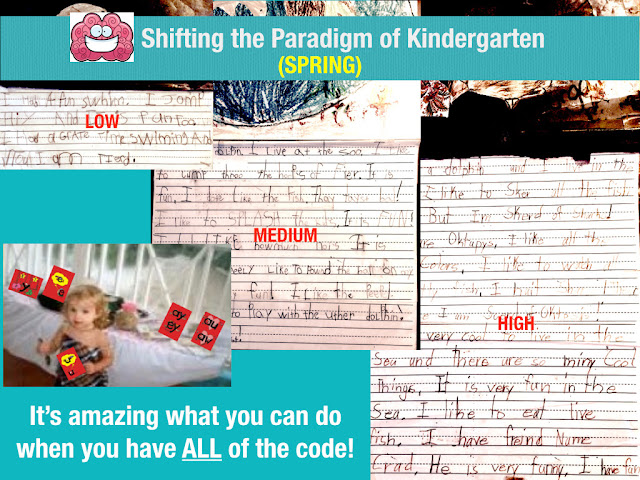




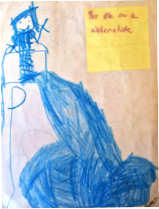













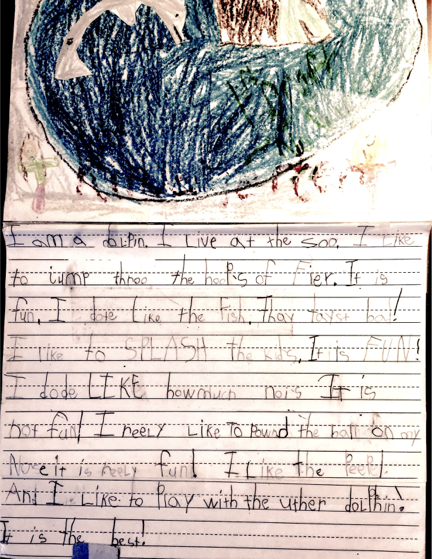




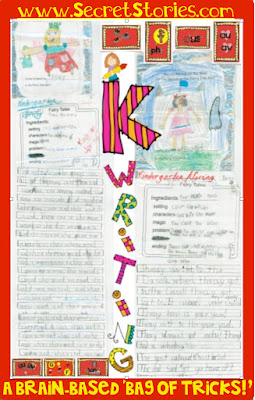





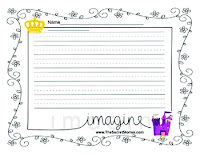


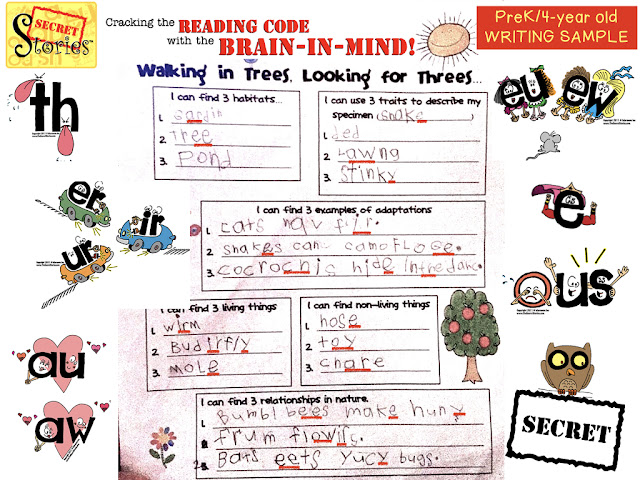



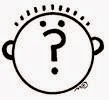





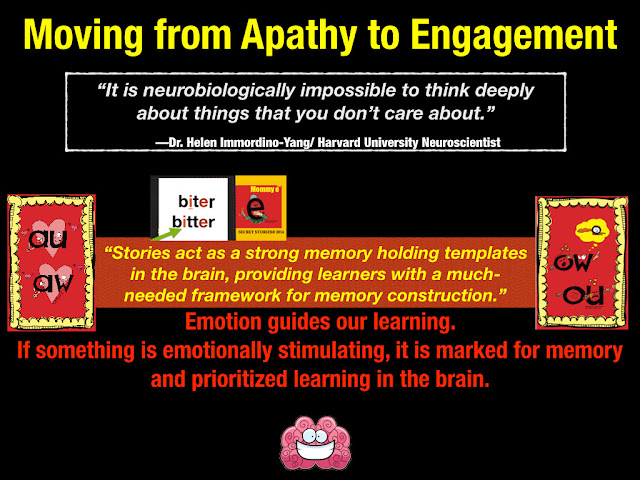








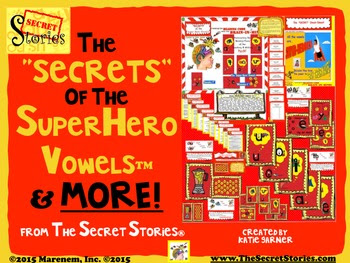



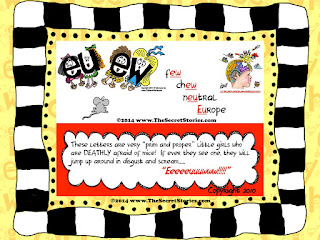
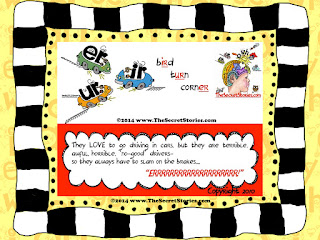


















At this point in the year, you might want to 'go all the way' and try the "Letter Runs" with them! Here's the link to that- https://www.youtube.com/watch?v=iHUwuuXsh-0 ..........and don't forget to try it BACKWARDS!!
Looking forward to hearing how they do!
Julie
lorepuckett at gmail dot com
Folks were setting chairs out on both ends of the corridor to hear you, but unfortunately my ears are too old to hear from that far away so I gave up! I'm hoping to have better luck seeing you at the Natl Elementary Principals Conference this summer.
You should know that your 'Secrets' are an ongoing topic of conversation at our school and have had an incredible impact on our student achievement this year. As a school administrator, it's been truly amazing to witness the progress made at each grade level, especially by our most at-risk. I'm just in awe, as are our parents (which is always a good thing!)
My teachers were so disappointed that I couldn't get into your session, as they promised the kids that I would take a picture with you to show them. Apparently the teachers that came to your sessions last year tried, but it was too crowded and you had too many people around you afterwards. I told them that this year was even worse, given that I couldn't even get through the door!
Hopefully I'll have better luck seeing you in July!
I will most definitely be at the Principal's Conference in July and I'll even save a seat for you, just in case ;)
Thanks for your kind email, and please let your teachers (and students) know how happy I am to hear of their progress (and we'll definitely take that picture, as well!)
Looking forward to meeting you in July,
Katie
I am gearing up to make the next set before I have to leave town again for conference, with the focus being on "What to do when a "Secret" doesn't work?!!" as that's actually where the fun begins for learners with regard to their daily interactions with text becoming a virtual "playground" for critical thinking!!
In the meantime, don't hesitate to ask, should you have any questions, and thanks again for your comment!
I remember wanting to buy my whole class t-shirts with- "I survived Mrs. Garner's 1st Year Teaching!!" written across the front!! ;)
These 'work-around' strategies (i.e. motor/ muscle memory for individual letters and sounds; social/ emotive connections/ cues for complex pattern sound retrieval) are crucial for learners struggling with cognitive readiness.
For these learners, in particular, the ability to GIVE these core reading and writing skills, rather than having to wait on 'developmental readiness' in order to TEACH them, truly makes all the difference!!
So many of the problems that Title I learners face stem from the fact that in the first few years of school, they are 'slaves' to their own developmental readiness, resulting in their having to continually play on an uneven playing field!
By using brain research findings to circumvent these pitfalls, we can actually avoid these deficit areas in the brain entirely, targeting the stronger, more capable areas instead!
(Hope this makes sense.... have had glass of wine!!! :)
I am so glad to view your videos and your updates here. I learn something new everytime. Thanks so much !
Denise
I'm so glad you found the videos and updated info on the Secret Stories website, as I've really been working hard to 'flesh-out' the basic strategy-base.
I'm curious if you've been in the same grade level since you started using them or if you've moved around a bit?
My best teacher friend went to your workshop ...she was so impressed, she came back and told me all about this great new program. I was so excited I purchased the set with my own money and have been using it ever since.
(and by useful, I mean 'only what's necessary to be able to read and write,' given that the goal is to give learners at the earliest grade level EVERYTHING they need to jump into working with text.... both reading and writing!!
Because the brain will require an explanation for anything encountered on a fairly frequent basis in text- there could be 'no stone left unturned' when it comes to accounting for the various letter patter sound possibilities. This, however, is different from teaching "rules for rules' sake" (i.e. the less useful and/ or less frequently occurring phonics rules/ sound patterns).
My rule of thumb was to account for only those patterns/ sounds that occurred '5 times or more' in text, given their likelihood to be encountered often enough by learners to require an explanation.
Patterns/ sounds occurring LESS than five times would are either put in "Word Jail" OR 'rehabilitated' .... so as to avoid having an 'overcrowded prison system' / overcrowded word wall, both of which are equally ineffective ;)
As for your specific question regarding the letter a and providing the 'uh' or 'schwa sound' being taught/ included in the "Better Alphabet Song" as an additional sound option.... this would be an example having 'too many cooks in the kitchen,' in that there is too little value/ purpose in teaching it.
What I mean by this is, if a beginning learner knows the SECRETS, he will attack a word like 'about' or 'around' with a 'short a' sound, as he knows that Mommy e isn't 'one letter away' and thus can't make a 'say its name.' Attacking these words with the short a sound will STILL result in learners (even lower level Kindergartners!!) still being able to 'get the word.' In other words, they will still recognize that the word is 'about' or 'around,' regardless of the fact that they attacked it with the short a sound ...... The presumption is that learners can and will apply at least a "grain of common sense" in recognizing the word, and my experience with the 'lowest of the low' kindergartners proves this out!!
By taking into account the differences between how words can sound, depending upon how they are sounded out, I was able to determine which required SECRETS and which were, for lack of a better term...."figure-out-able!!" LoL!
With the Sneaky Y, all THREE sounds had to be accounted for, as they are all vastly different (y as in yellow, y as in July, and y as in mommy) ..... Each are entirely different sounds and thus, each must be accounted for with logical explanations as to what / why causes each to occur.
Again, with the ultimate goal being to GIVE learners EVERYTHING they need to read and write at the EARLIEST grade level, so as to allow EXPERIENCE to be the best teacher..... it was necessary to think in terms of training "ER Doctors" ..... preparing them for what's 'most likely' to roll through the door, while spending less time preparing them to handle the "plague" ;)
I hope this helps to clarify the basis for the SECRETS, and I promise to get into more detail about exactly this in upcoming posts.... you're just one step ahead with your great question!!!!
Jada
jadawtolbert@gmail.com
as the "WHY" equals "CRITICAL-THINKING!"
:)
;)